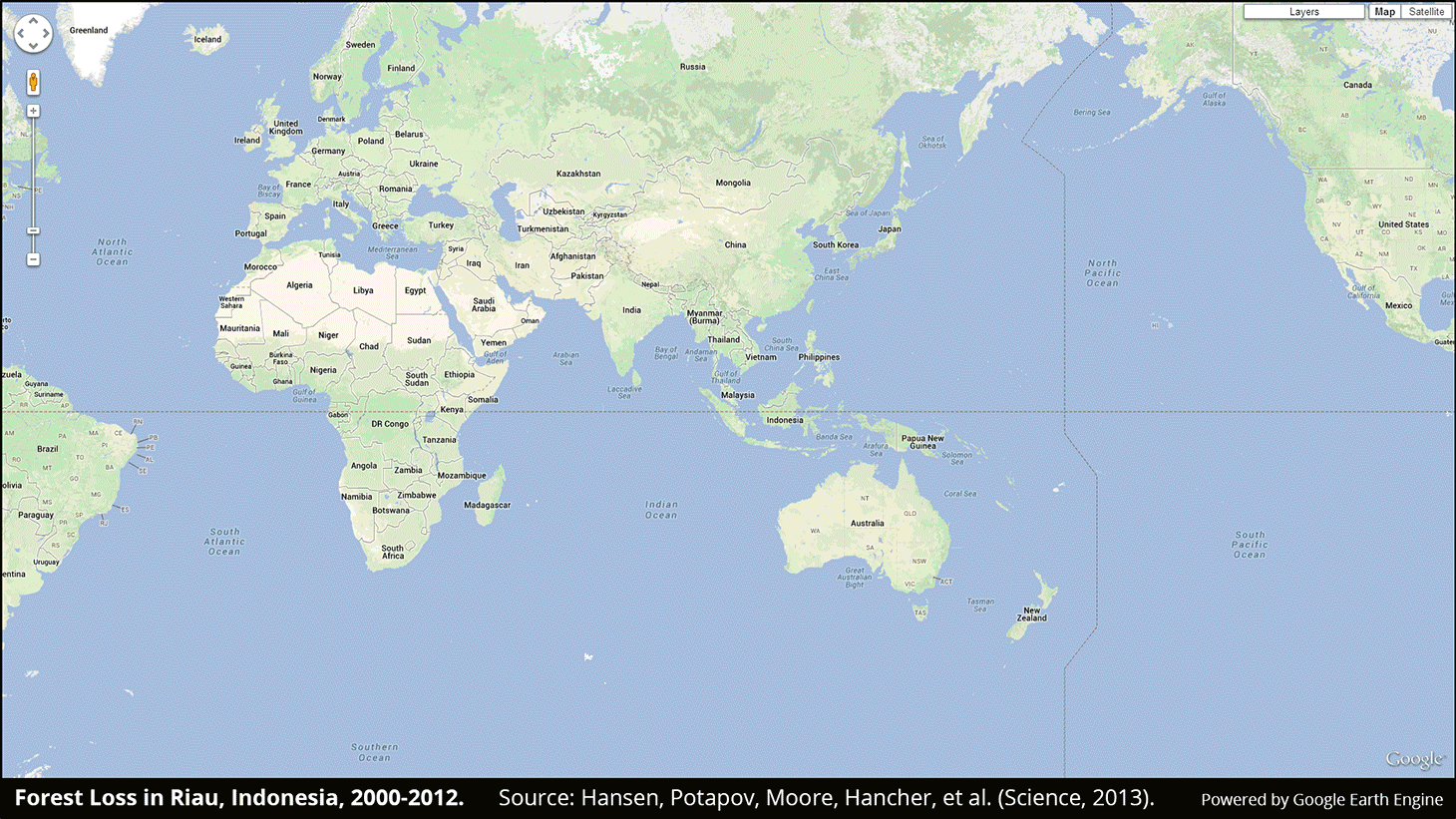That means countries like Paraguay, Malaysia and Cambodia, which had the highest rates of forest loss of all the countries studied, are engaging in massive deforestation to produce items — like timber, soybeans and palm oil — linked to industrial development that the researchers say is harmful to biodiversity.
High-res map of world forests details true loss to ecosystems
Google and scientists use satellite images to show extent of deforestation

Scientists have teamed up with Google and the U.S. government to
create the first high-resolution map of the world’s forests, using
detailed satellite imagery to document growth and loss of some of the
planet’s key ecosystems over time.
Geographers and climate scientists have been using satellites for a
few decades in order to observe the Earth’s surface, but the resulting
images were “big, blurry messes,” says Matthew Hansen, a professor of geographical sciences at the University of Maryland who led the research team.
“This project is a really big deal in terms of special detail,” he
told Al Jazeera in a telephone interview. “It’s a long-held goal of our
discipline to do accurate mapping of Earth’s and the land’s surface and
how it changed over time.”
Using archived imagery captured by a NASA satellite called Landsat, Hansen and his team used Google Earth Engine computing to map
a detailed view of global forests at 30-meter resolution that they say
is a vast improvement over previous knowledge of forest cover. It has
allowed them to quantify forest gain and loss each year from 2000 to
2012, whether from logging, fires or storms. Users of the map have the
ability to zoom in on small regions of the globe and see how forest
cover has changed over time.
And what the scientists found in terms of deforestation, as detailed in a paper published Thursday in the journal Science,
alarmed them. Between 2000 and 2012, some 880,000 square miles of
forest were lost, largely in tropical and subtropical areas. Only
309,000 square miles of forest were gained during that period.
What’s more, while the satellite images confirmed that the rate of deforestation in Brazilian rain forests —
once the highest in the world — is on the decline, and indeed has been
cut in half, “intensive forestry” in developing countries in Africa and
Asia more than offset the gains achieved in Brazil.
In fact, tropical climates exhibited a distinct trend of forest loss
that increased by 811 square miles each year, the scientists found. That
means countries like Paraguay, Malaysia and Cambodia, which had the
highest rates of forest loss of all the countries studied, are engaging
in massive deforestation to produce items — like timber, soybeans and
palm oil — linked to industrial development that the researchers say is
harmful to biodiversity.
And closer to home, the team found that 31 percent of the subtropical
forests in the Southeastern United States had either been lost or
regrown, and that those forests were being disturbed at four times the
rate of South American rain forests from 2000 to 2012.
The global marketplace
The practice of clearing virgin forests and growing trees for logging
purposes began in Southeastern states like Virginia and the Carolinas
in the 19th century, as the U.S. was becoming an industrialized nation.
Hansen says today's rapidly industrializing countries in Southeast Asia,
Latin America and Africa need to think carefully about their practices.
“Are developing countries going to develop themselves into their
version of the Southeast United States? It depends on how we value
biodiversity in those forests and the services they provide,” he said.
Brazil was the only large country with such a high rate of decline of
forest loss — and it’s also one of the few large countries that have
instituted aggressive conservation policies involving collaboration
between the government, the private sector and NGOs.
For example, in 2009, the governors from all nine states in Brazil’s
Amazon region signed a declaration they sent to then-president Luiz
Inacio Lula da Silva that called for zero deforestation and funding for
forest conservation through carbon offsets, according to the Environmental Defense Fund.
On Thursday, however, environment minister Izabella Teixeira announced that the deforestation rate had risen 28 percent in 2013, a result of increased farming and soya-bean production, and called an emergency meeting to try to remedy the situation.
Developing countries, Hansen said, “need to be the counterweight to
the status quo. Even in Brazil, they are going to have to maintain it.
Environmental fights have to be fought all the time. It’s not like it’s
finished, even in Brazil.”
Hansen and his team say they will continue to track changes in forest
cover each year as well as contributing to an alert system under
development called Global Forest Watch, which would notify subscribers if, say, someone spots a virgin forest being logged.
But the ever-increasing demands of the global marketplace mean that
the supply chain — in which fields in Indonesia are cleared to grow
soybeans that in turn feed cattle in China, whose rising numbers result
from the dietary changes that go along with increased Chinese wealth, a
wealth that stems from producing technology that everyone wants to buy —
is a much larger issue.
“The product chain leads directly back to us,” Hansen said of the
driving force behind the deforestation in developing countries. “The
demand comes back to us."

























No comments:
Post a Comment